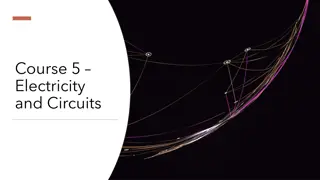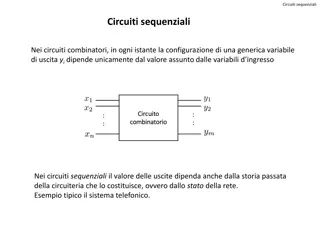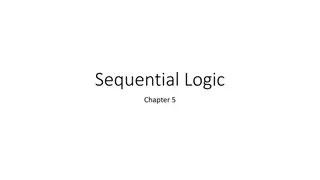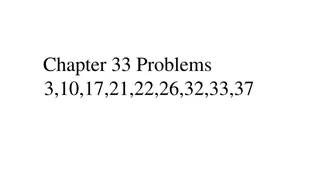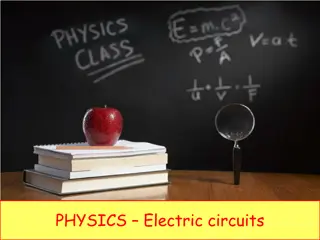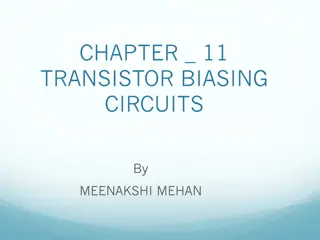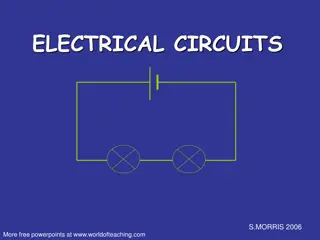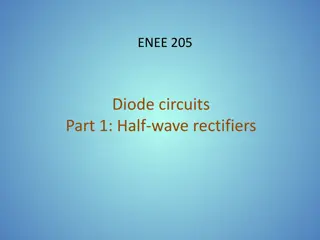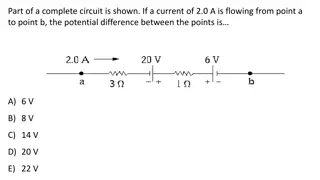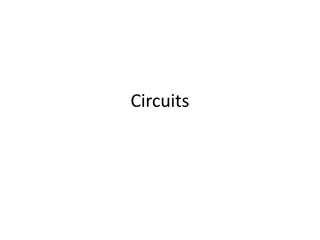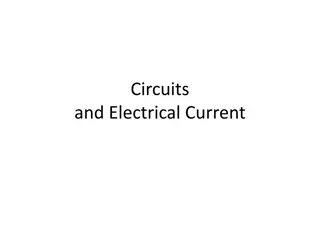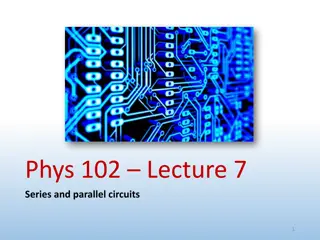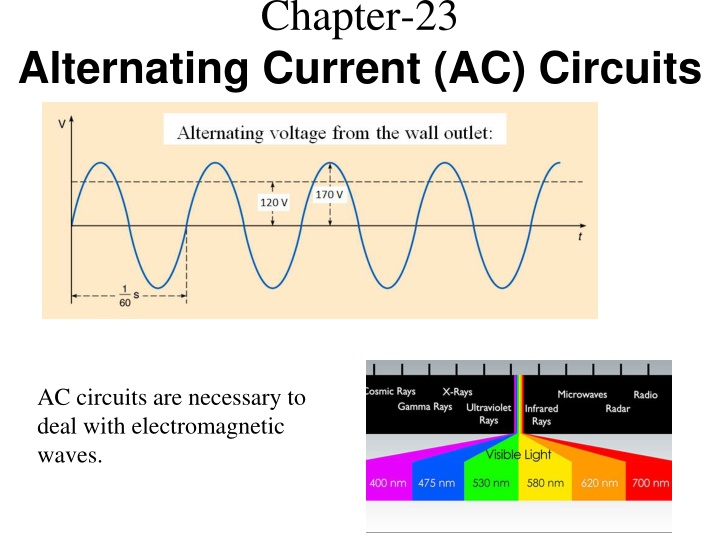
Alternating Current Circuits and Reactance
Explore the world of AC circuits and electromagnetic waves, learn about resistors, capacitors, inductors, reactance, and their applications. Understand how current and voltage behave in different circuit components. Discover the relationships between current and voltage in capacitive and inductive circuits.
Uploaded on | 0 Views
Download Presentation

Please find below an Image/Link to download the presentation.
The content on the website is provided AS IS for your information and personal use only. It may not be sold, licensed, or shared on other websites without obtaining consent from the author. If you encounter any issues during the download, it is possible that the publisher has removed the file from their server.
You are allowed to download the files provided on this website for personal or commercial use, subject to the condition that they are used lawfully. All files are the property of their respective owners.
The content on the website is provided AS IS for your information and personal use only. It may not be sold, licensed, or shared on other websites without obtaining consent from the author.
E N D
Presentation Transcript
Chapter-23 Alternating Current (AC) Circuits AC circuits are necessary to deal with electromagnetic waves.
Alternating Signal The rms amplitude is the DC voltage which will deliver the same average power as the AC signal.
Resistance In a circuit containing only a resistor, the instantaneous voltage and current are in phase.
Capacitive Reactance, XC What is the reactance of a 0.5 F capacitor at 1 kHz?
Current and Voltage in a Capacitive Circuit In a circuit containing only a capacitor, the instantaneous voltage and current are not in phase. The current leads the voltage by one-quarter of a cycle or by a phase angle of 90 .
Inductor and Inductive Reactance, XL What is the reactance of a 4.5 mH inductor at 1 kHz?
Applications of Inductors 1. Inductors are used to control magnetic fields and store magnetic energy, just like capacitors with electric fields. 2. Inductors & capacitors are used in tuning circuits in selecting signals. 3. Inductive-loops are used to detect vehicles at traffic lights. 4. Airport security systems employ inductors. The inductance of the circuit is affected by any metal object in the path. Such detectors can be adjusted for sensitivity and also can indicate the approximate location of metal found on a person.
Current and Voltage in an Inductive Circuit The instantaneous voltage and current in a circuit containing only an inductor are not in phase. The current lags behind the voltage by one-quarter of a cycle or by a phase angle of 90 .
A Comparison: Capacitive versus Inductive The current leads the voltage by one-quarter of a cycle or by a phase angle of 90 . The current lags behind the voltage by one-quarter of a cycle or by a phase angle of 90 .
23.3. Circuits Containing Resistance, Capacitance, and Inductance
Impedance,z for a Series RCL Circuit
Impedance and RMS Current
The physics of body-fat scales When you stand barefoot on the scale, electrodes beneath your feet send a small ac current through your lower body that allows the body's electrical impedance to be measured. This impedance is correlated with the percentage of fat in the body. The bioelectrical impedance is largely determined by resistance and capacitive reactance. Capacitance enters the picture because cell membranes can act like tiny capacitors. Bioelectric impedance analysis provides the basis for the determination of body-fat percentage by the body-fat scales.



